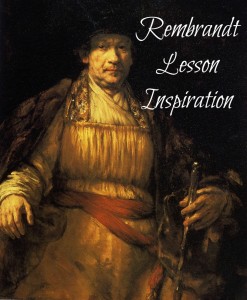
Rembrandt van Rijn
1658
Oil on Canvas
Frick Collection, NYC
How would you describe a person who paints himself like the image on the left? Strong? Bold? Rich? Commanding? Arrogant?
Rembandt van Rijn was well known for his self-confidence. He painted over 90 self-portraits (he was his own most patient model after all) and is famous for his attention to detail and use of light called Chiaroscuro.
Rembrandt van Rijn
1606-1669
Holland
painter & etcher
Rembrandt’s full name is Rembrandt Harmansz van Rijn, which when translated, means Rembrandt, Harman’s son, from the Rhine. His father owned a windmill and supported his family of 10 children well.
At the age of 13 Rembrandt left school to study art. Remember, at that time most kids only went to school until 10, and only the lucky few moved on to high-school at 10 and university at 13, so he was by no means a drop-out.
At 17, Rembrandt was able to start his own studio, and by 20 he had become a leading portrait painter to the rich. His work eventually became so popular that he was producing a new portrait every two weeks. Rembrandt wasn’t able to do this on his own. Like many artist of his day, and even those like Chihuly in our time, Rembrandt worked with a team of up to 50 apprentices at a time who produced work alongside him, sometimes working on the same canvas.
In fact, some of these apprentices have fooled us for years. We used to think that there were over 700 paintings by Rembrandt, but that number has recently been reduced to about 350 with the help of new technology that enables scientists to discern the work of one artist from another.
One reason for Rembrandt’s popularity was his willingness to paint people in a recognizable way, flaws and all. Wrinkles and expressions were captured in elegant detail. He also arranged his subjects in lifelike poses, rather than in straight boring lines. In his first important commission, for example, he portrayed the members of the Surgeon’s Guild (many claim that this guild was basically an autopsy club rather than an academic gathering) in an action packed discussion and in the shape of a triangle, rather than in a stoic line.
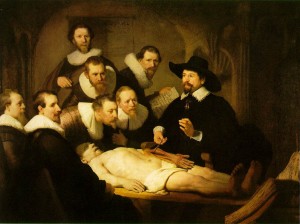
1632
oil on canvas
Mauritshuis
In addition to portraits, Rembrandt is well known for his Biblical themes. Curiously, he used clothing from his own time on all of the Biblical characters, leaving the observe with an interesting mix of eras to tease apart. This is often said to be part of Rembrandt’s love of props. He collected various items, including clothing, that he would later use in his paintings.
Unfortunately, work wasn’t always plentiful. Rembrandt lost multiple children and eventually his wife. His work became less fashionable, and he didn’t manage his finances well. As his reputation declined, Rembrandt refused to compromise his artistic vision. While we may appreciate this now, in his time he was viewed as stubborn. His home was repossessed and he had an increasingly difficult time finding work at the end of his life.
Observe:
Spend some time looking carefully at a single Rembrandt painting. We chose the one below. Larger version available here.
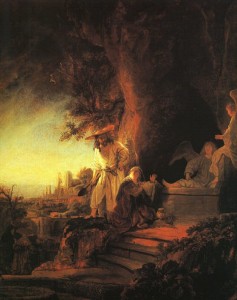
Rembrandt van Rijn
1638, oil on canvas
Royal Collection, Buckingham Palace, London
Cut a hole in an index card and use it to force your eyes to examine only one area at a time. Do your perceptions of the painting change depending on which area you are looking at?
Read:

- We really enjoyed reading Hana in the Time of the Tulips* by Deborah Noyes. I believe it is out of print now, but check your local library to see if they have a copy available.
- Rembrandt and the Boy who Drew Dogs* by Molly Blaisdel was also fun.
- Rembrandt* by Xavier Niz, while not as entertaining, was very informative.
Online Activities:
- Want to see more of Rembrandt’s work? There is a fantastic listing of Biblical artwork by Rembrandt available at ArtBible.info Take a look! How many stories can you recognize?
- See Rembrandt age through his own self portraits in this short video.
- Color an image of Rembrandt (okay, so the cartoon version of Rembrandt) in his studio at Getting to Know.com. Their videos are fantastic by the way, I highly suggest you take a look.
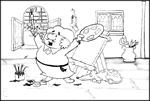
Create:
Begin to learn about light and shadows by creating your own pastel flower pots. In order to complete this project, each child will need the following items:
- Reeves soft pastels* – please check to ensure that you have white and black in addition to your colors
- Tru Ray Acid Free Construction Paper* 12”x18” – One sheet black or dark blue per child
- Prang crayons*
- Scotch 3M clear glue stick*
- pencil with an eraser (does not need to be an artist pencil)
- several cotton swabs
- several paper towels
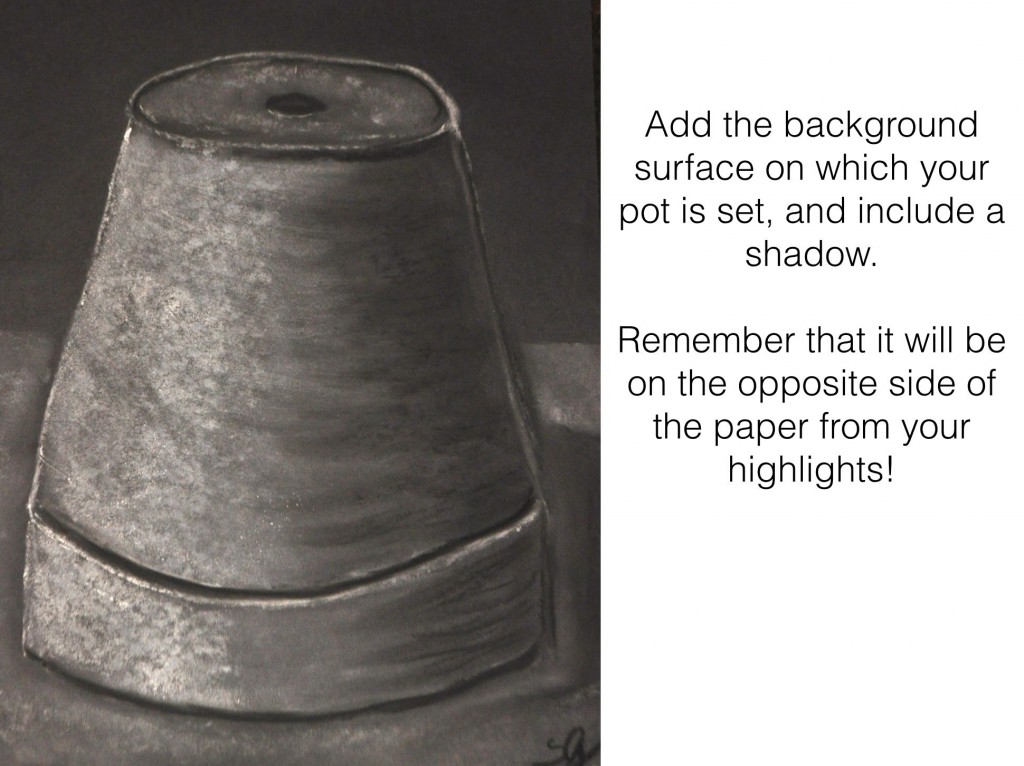
Pastels smear easily, so keep your work in a sleeve or spray it with fixative* it you would like to protect it.
Consider:
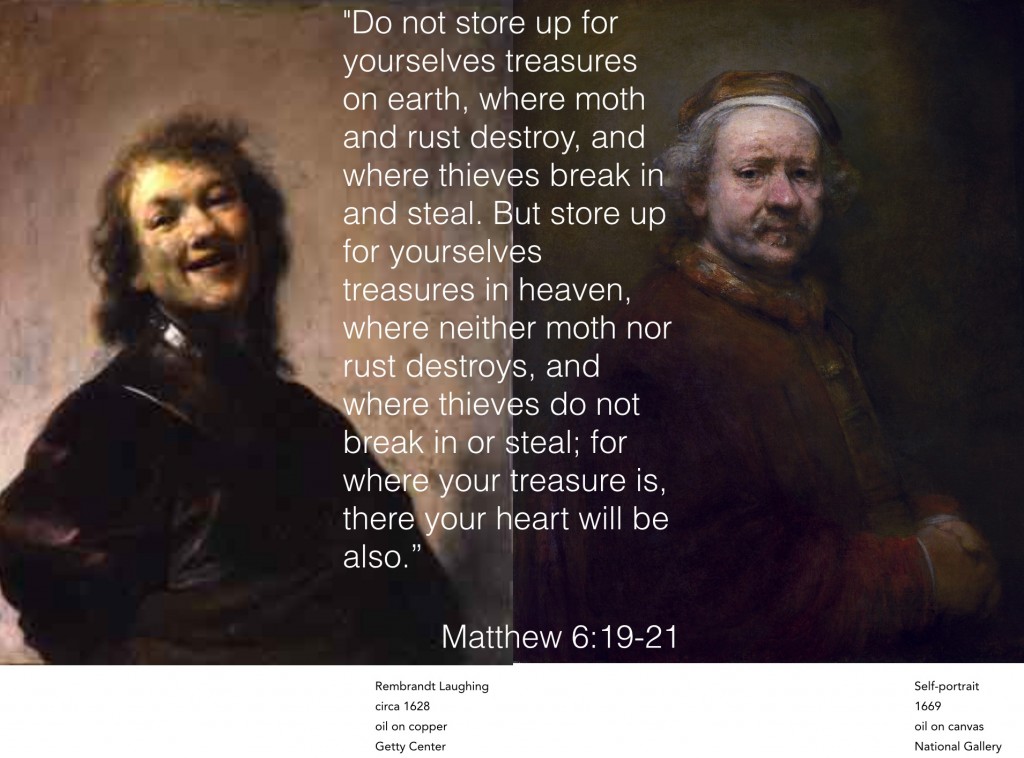
*Items marked with an asterisk are affiliate links. I only list items that my family uses and enjoys, but you should be aware that, should you click through, I may receive a portion of any purchase that you make on the linked site. There is no cost to you.



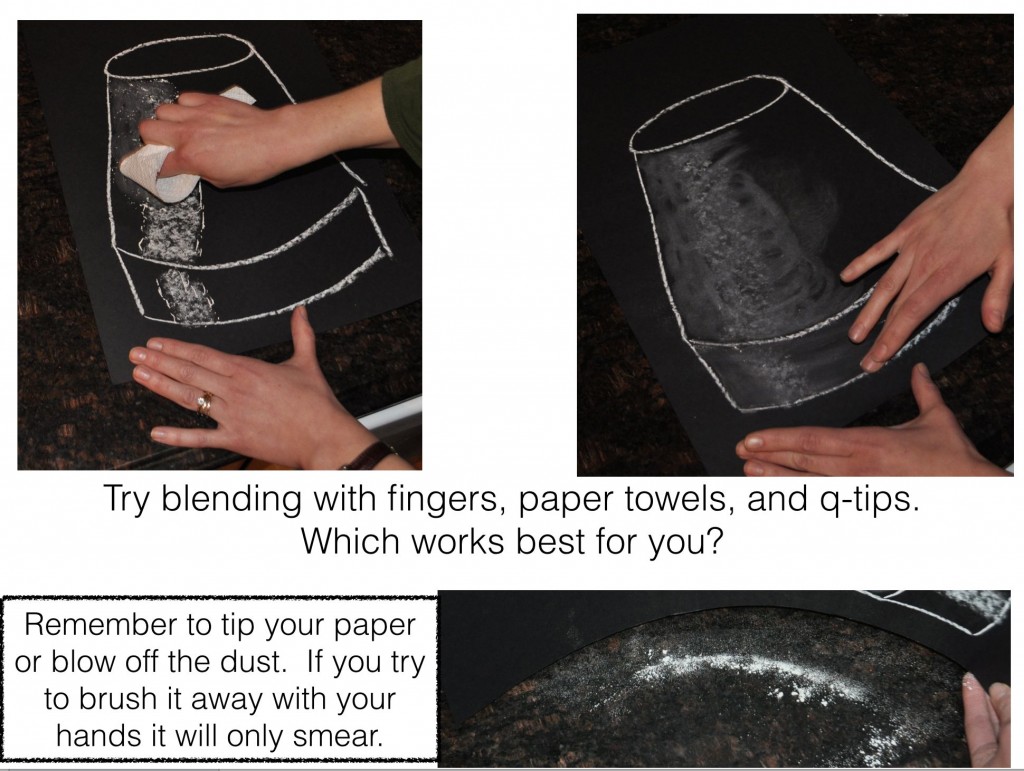
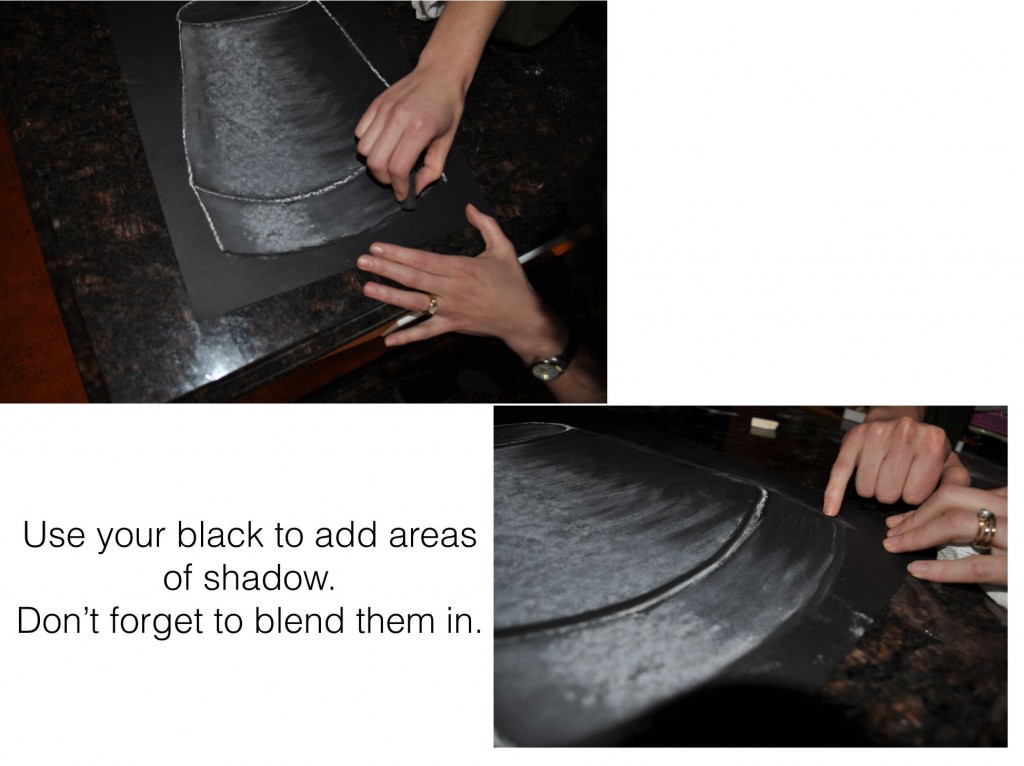

This is great! I like the inclusion of the art lesson. I’m using this with my children and adding it to my blog!
Pingback: 17th Century World History Homeschool Curriculum -